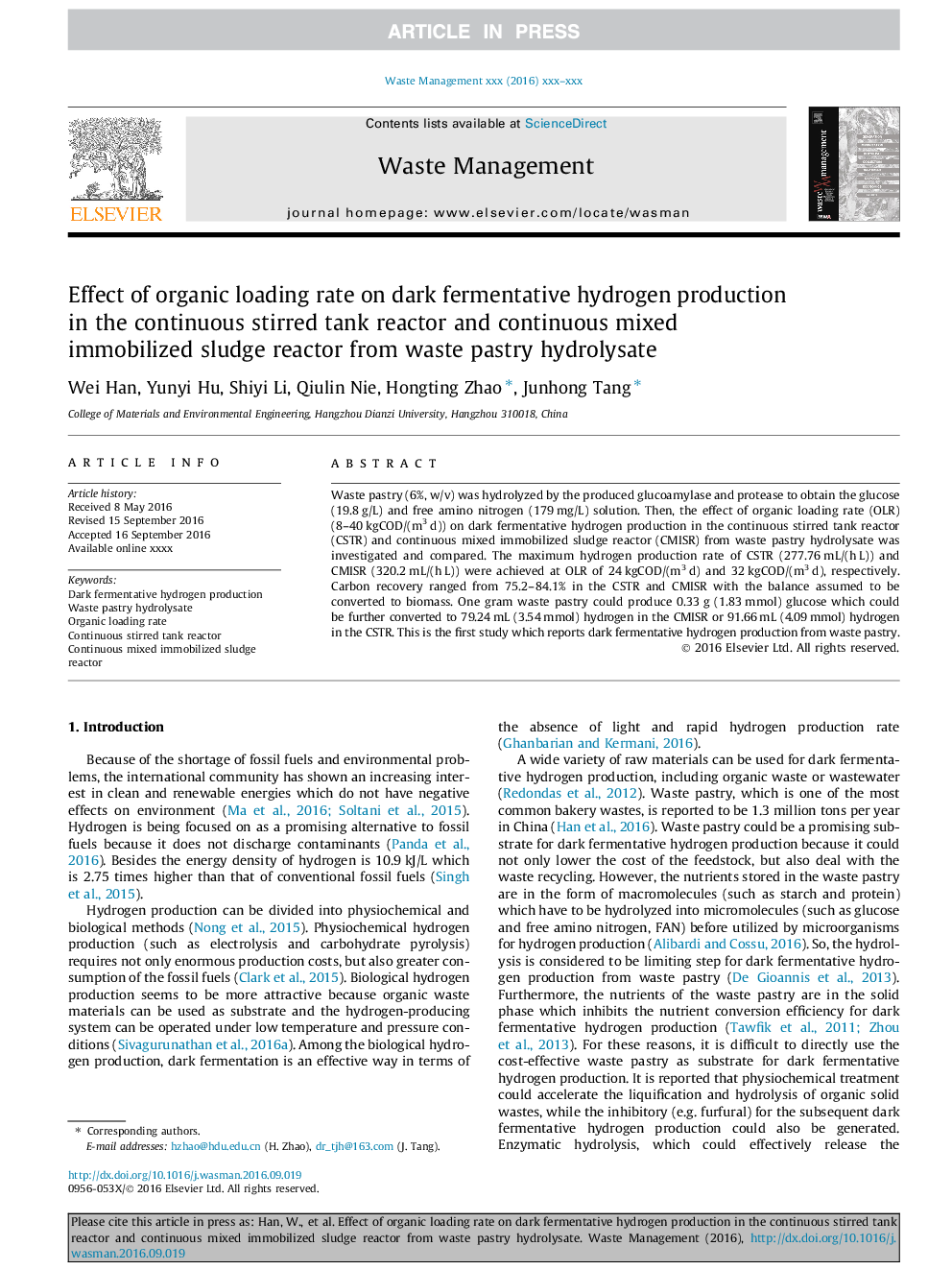| Article ID | Journal | Published Year | Pages | File Type |
|---|---|---|---|---|
| 5757104 | Waste Management | 2016 | 6 Pages |
Abstract
Waste pastry (6%, w/v) was hydrolyzed by the produced glucoamylase and protease to obtain the glucose (19.8 g/L) and free amino nitrogen (179 mg/L) solution. Then, the effect of organic loading rate (OLR) (8-40 kgCOD/(m3 d)) on dark fermentative hydrogen production in the continuous stirred tank reactor (CSTR) and continuous mixed immobilized sludge reactor (CMISR) from waste pastry hydrolysate was investigated and compared. The maximum hydrogen production rate of CSTR (277.76 mL/(h L)) and CMISR (320.2 mL/(h L)) were achieved at OLR of 24 kgCOD/(m3 d) and 32 kgCOD/(m3 d), respectively. Carbon recovery ranged from 75.2-84.1% in the CSTR and CMISR with the balance assumed to be converted to biomass. One gram waste pastry could produce 0.33 g (1.83 mmol) glucose which could be further converted to 79.24 mL (3.54 mmol) hydrogen in the CMISR or 91.66 mL (4.09 mmol) hydrogen in the CSTR. This is the first study which reports dark fermentative hydrogen production from waste pastry.
Keywords
Related Topics
Physical Sciences and Engineering
Earth and Planetary Sciences
Geotechnical Engineering and Engineering Geology
Authors
Wei Han, Yunyi Hu, Shiyi Li, Qiulin Nie, Hongting Zhao, Junhong Tang,
